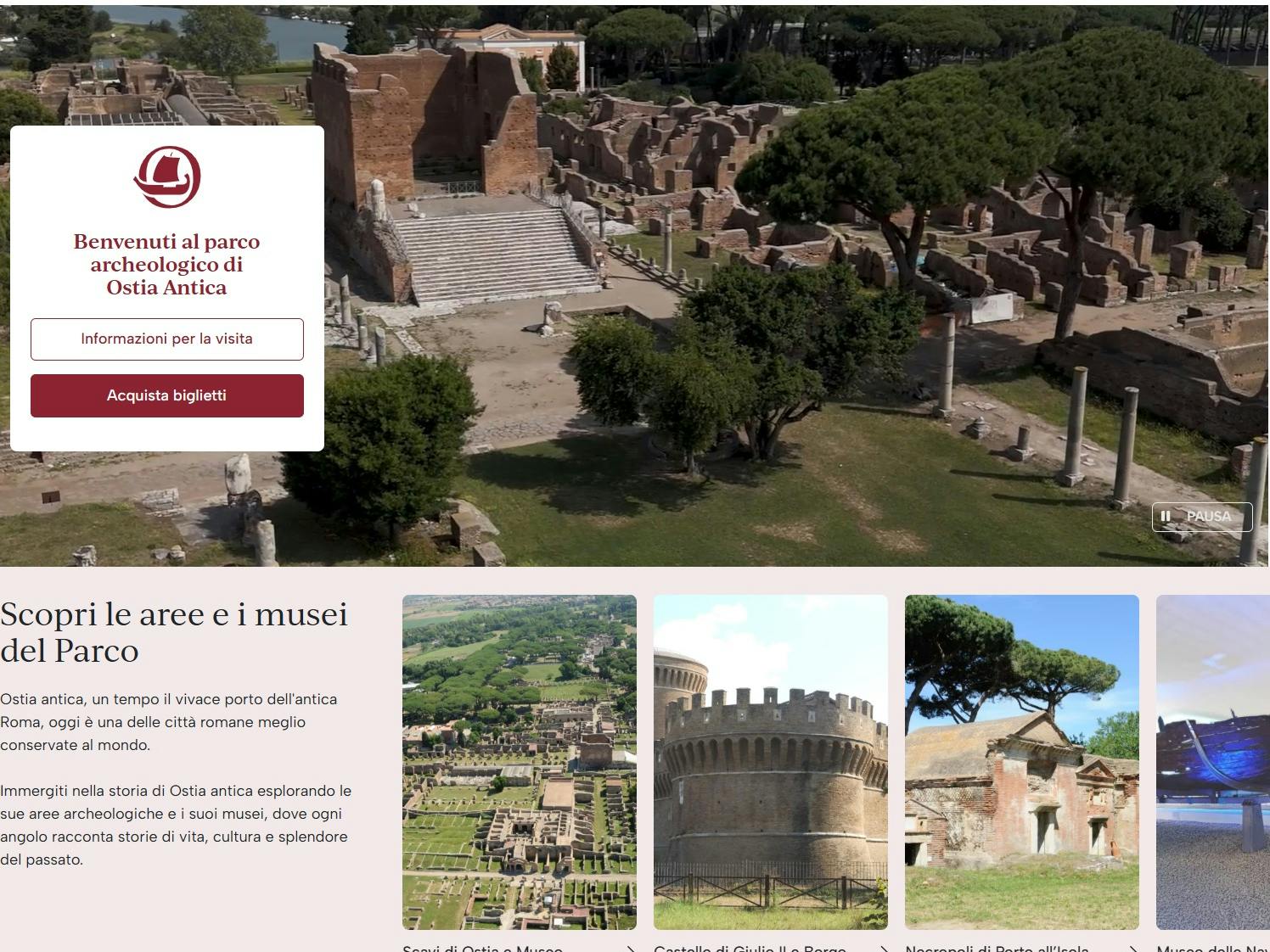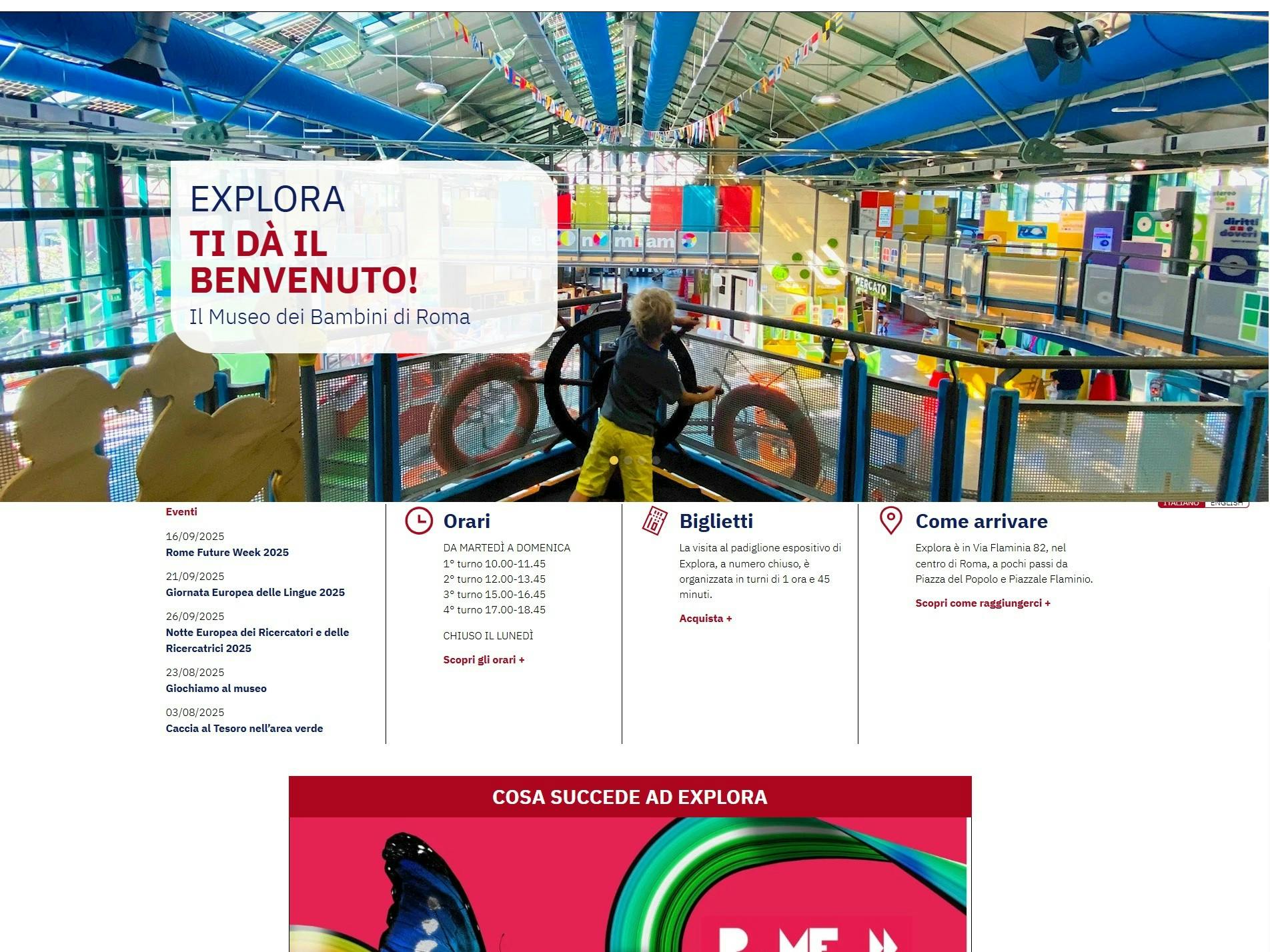
Museum accessibility starts online
How to build websites accessible to multiple audiences
by Marina Lo Blundo
Introduction
This article does not aim to provide rules for creating accessible websites, for which useful sources listed at the end should be consulted, but rather to discuss the current context from the perspective of Italian legislation and the European Agenda, showing the state of the art, particularly in Italy. The discussion unfolds on two levels: a technical level, concerning the CMS (Content Management System) configuration and thus the site architecture, and a level related to the navigation experience, where graphic choices and content play a key role.
Attention will primarily focus on the websites of Italian Luoghi della cultura – especially Italian Museums under the Ministry of Culture – Direzione generale Musei, and the Sistema Museale Nazionale.
The regulatory context: the concept of accessibility
The topic of online accessibility of museum websites (meaning both Museums and Archaeological Parks, whether autonomous institutions or under Direzioni regionali Musei) is part of a broader discussion about the online accessibility of public administration websites. The need to provide citizens with clear and simple information for a search or requirement has been at the heart of a lengthy debate about languages, structures, and architectures of websites.
From a regulatory standpoint, the reference law is no. 4 of January 9
The law particularly protects people who could be discriminated against in the use of technology, mainly people with disabilities who need to access digital information differently (using assistive technologies). However, it would be wrong to think that accessibility concerns only people with disabilities. The concept thus broadens to usability, and the goal becomes not only breaking down physical and cognitive barriers, but also reducing difficulties – in reading, navigation, understanding – that cause fatigue in users.
The WCAG 2.1 Web Content Accessibility Guidelines «include a wide range of recommendations to allow greater accessibility to web content. By following these guidelines, content will be accessible to a broader number of people with disabilities including blindness and low vision, deafness and hearing loss, motor limitations, speech disabilities, photosensitivity, as well as combinations of these, and will partially improve accessibility for those with learning disabilities and/or cognitive limitations. However, the guidelines cannot be considered exhaustive for all the needs of users with such disabilities. WCAG 2.1 are web content accessibility guidelines applicable to desktop, laptop, tablet, and mobile devices. Following them will help make web content more usable by users in general».
Technical specifications
At the CMS and site architecture level, the principles of Design for all must be followed, providing therefore a configuration capable of meeting the requirements indicated in the AGID guidelines concerning design for public administration websites and digital services.
Specifically, during development, the following should be provided:
- Semantic markup appropriate to make the site’s content more easily accessible for assistive technologies.
- Hierarchical heading tags and clear definition of landmark tags, to create a well-organized content structure that is easy to navigate with assistive technologies.
- Alternative text for images, so that users with vision problems can understand the content of the images.
- Hidden text techniques to improve the comprehensibility of visual elements for screen readers. Expandable text techniques to provide additional information without distracting users from the main site content.
- Alternative text techniques using icons and symbols, so that users with cognitive disabilities can understand their meaning.
- Fully accessible keyboard navigation, so that users with motor disabilities can navigate the site without mouse support.
Alongside site architecture, content architecture and appearance must be structured. The first step is to adapt the design and the content structure to online reading modes and the cognitive processes of online readers. Therefore, usability, formatting, and text organization rules must be respected. The second step is to create and organize content to meet user needs: during design, it is essential first to ask who the website addresses, i.e., who the end users are, that is, the user personas, and based on their needs, structure the information.
The technical specifications to follow can be summarized in three points:
- Accessible colors and contrasts to improve text readability and ensure usability for users with vision problems and color blindness.
- Text content scalable by system tools without affecting readability.
- Consistent, logical, and well-structured navigation so users can easily find the desired content.
The state of the art… online
Many Italian museums, especially autonomous institutions under the Ministry of Culture, have equipped themselves in recent years with websites meeting the AGID guidelines mentioned above both in terms of design and accessibility.
Similarly, numerous non-state public museums have developed websites designed according to the WCAG guidelines mentioned earlier, thanks to PNRR funding specifically assigned by the Ministry of Culture – Direzione generale Musei in the investment “Removal of physical and cognitive barriers in museums, libraries, and archives to allow broader access and participation in culture.”
Common features of these accessible sites include extremely intuitive navigation, a well-organized content and menu hierarchy on the homepage which generally includes a visually impactful header (photo or video), with a highlighted box for ticket purchase and visit planning information; followed by a presentation of the site/museum or sites in the case of Archaeological Parks, or current exhibitions, then a section dedicated to events. It is important that this section is always updated, as well as any changes in opening hours or ticket prices, and any minor public notices: museum staff must be enabled (and therefore properly trained) to act independently in producing and modifying content. For this reason, it is advisable that the chosen CMS is easy and intuitive especially for those working in the back-end. Mobile navigation is also always intuitive: especially in this version, an effective and strategic content hierarchy is fundamental; therefore, at design time, it must be very clear what should be emphasized compared to less relevant content and menus.
I recommend a list of museum, whic are compliant with physical and cognitive accessibility needs:
Parco archeologico del Colosseo
Parco archeologico di Ostia antica
Pinacoteca di Brera
Musei del Bargello
Museo archeologico nazionale di Taranto
Museo Poldi Pezzoli (Milano)
Explora - Il Museo dei Bambini di Roma
Galleria Nazionale d’Arte Moderna e Contemporanea (Roma)
MUNDA Museo Nazionale d’Abruzzo
The other Italian Museums will follow certainly soon.
To explore further
Bibliography
Y. Bindi, Language design. Guida all’usabilità delle parole, Apogeo, Milano, 2017
R. Bombi, a cura di, Manuale di comunicazione istituzionale e internazionale, Il Calamo, Roma, 2013
J. Deyla, Accessibilità: colori, immagini e parole, in G. Mason, P. Zilio, La comunicazione digitale per la PA, Apogeo Education/Maggioli Editore, Santarcangelo (RN), 2019, pp.243-250
N. Mandarano, Musei e media digitali, Carocci, Roma, 2019
N. Mandarano, Il digitale per i Musei, Carocci, Roma, 2024
G. Mason, P. Zilio, La comunicazione digitale per la PA, Apogeo 2019
Websites
https://www.w3.org/TR/WCAG21/
in Italian: https://www.w3.org/Translations/WCAG21-it/
https://www.agid.gov.it/sites/agid/files/2024-06/Linee%20guida%20sull%27accessibilit%C3%A0%20degli%20strumenti%20informatici%20-%20Soggetti%20privati.pdf
https://docs.italia.it/italia/design/lg-design-servizi-web/it/versione-corrente/index.html
https://designers.italia.it/community/notizie/20250414-contenuti-linguaggio-microtesti-e-tono-di-voce-i-fondamenti-di-italia-si-aggiornano/


